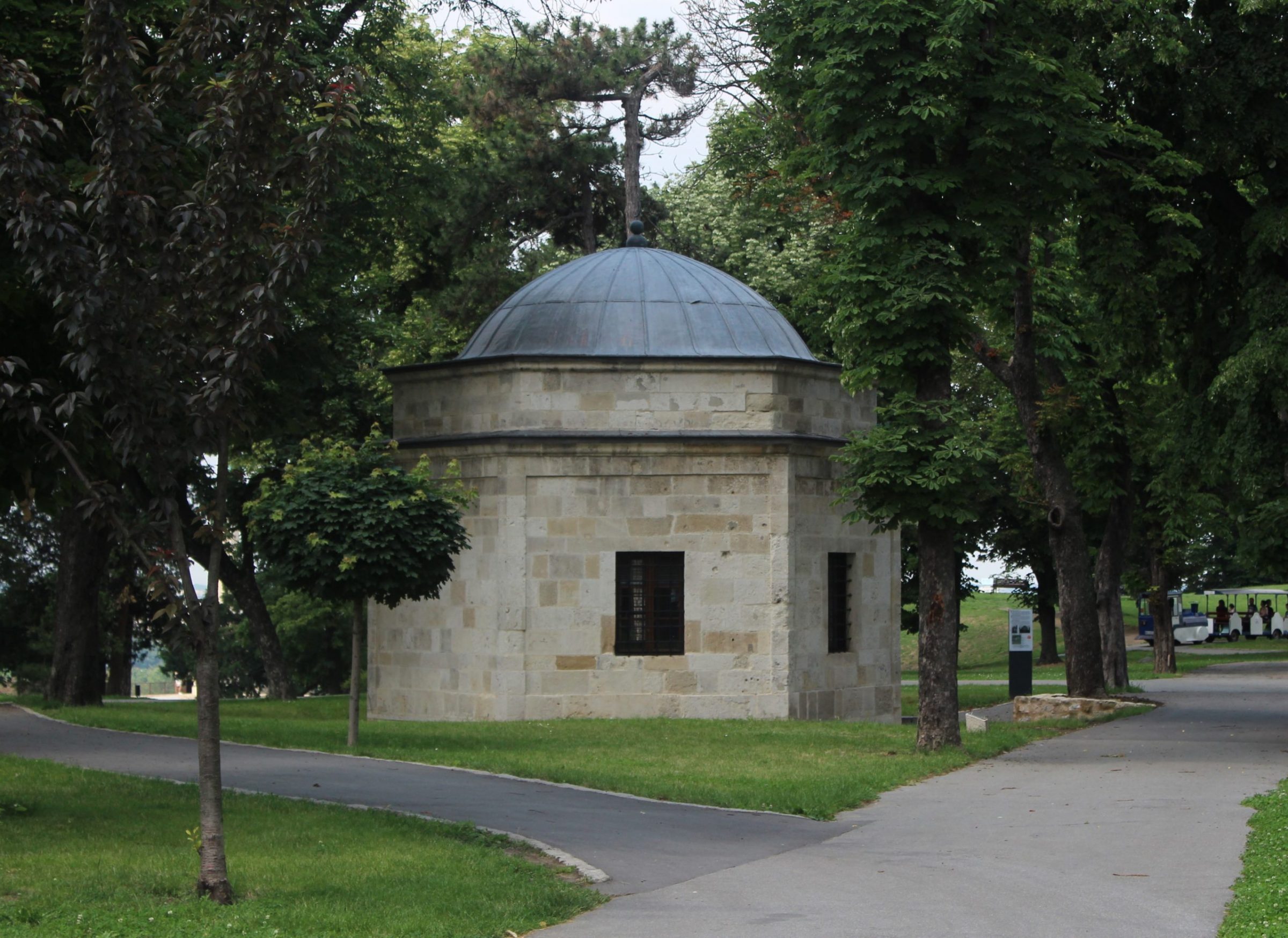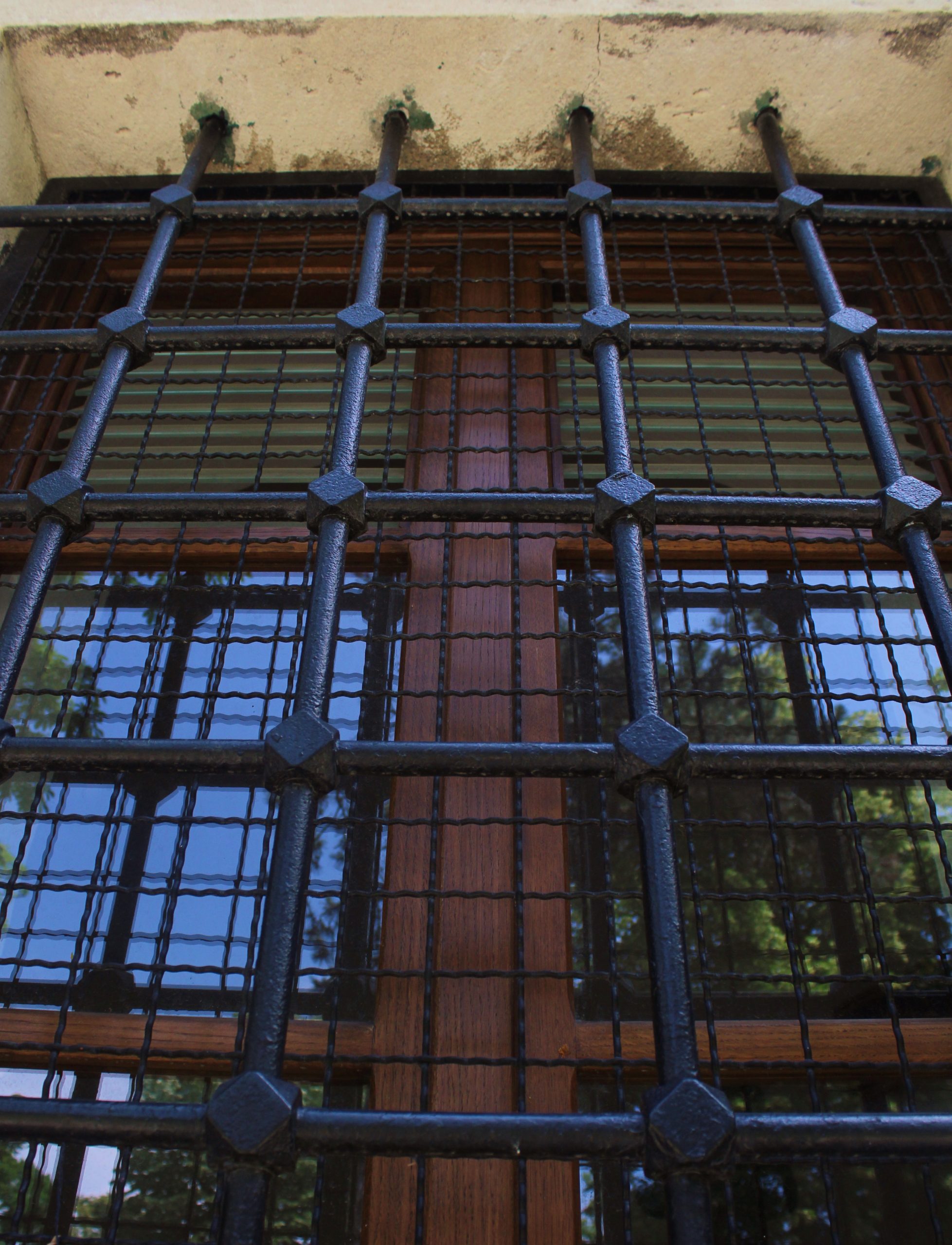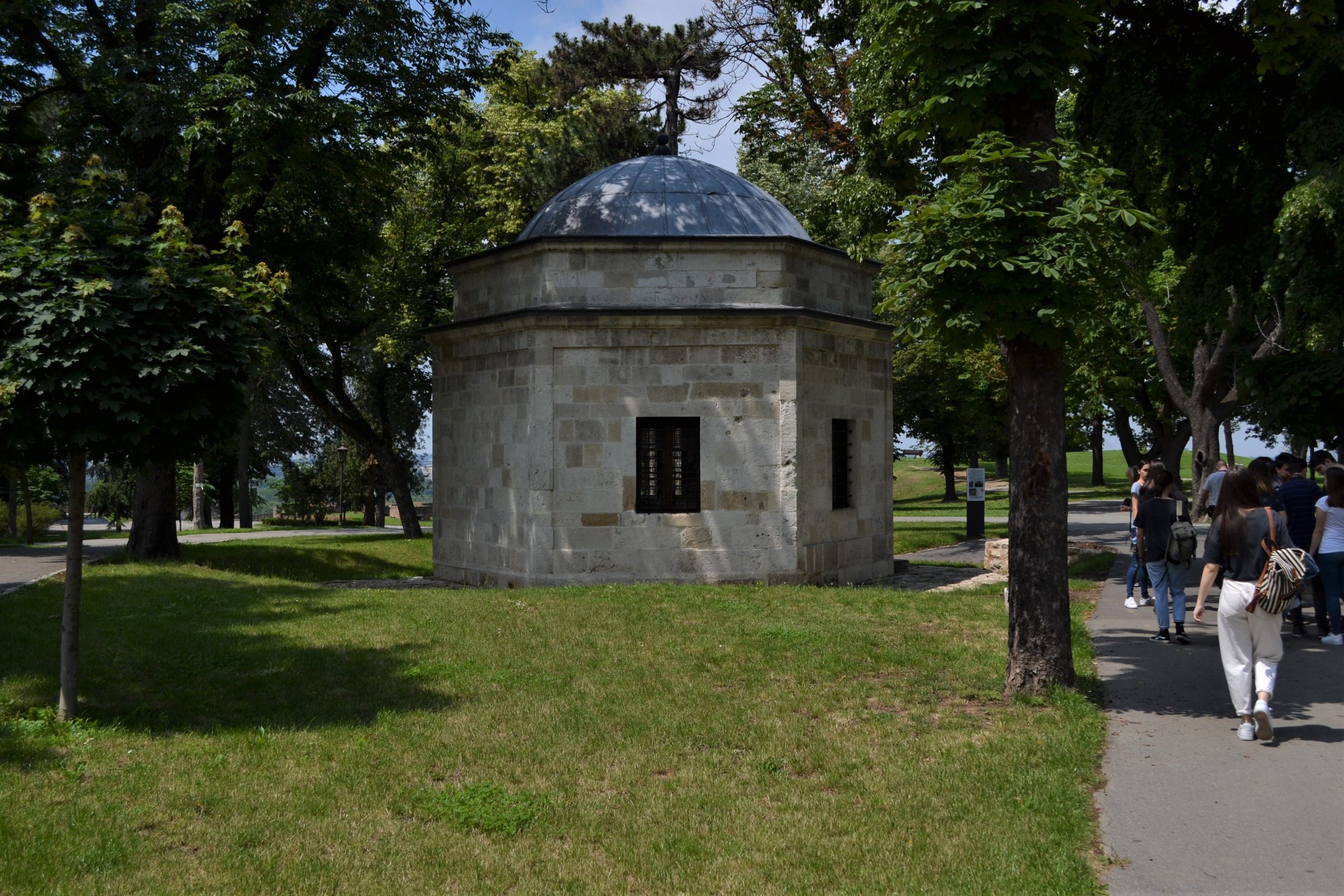WHERE IS IT?
It's located in the upper town of the Belgrade fortress, not far from Mehmed-Pasha Sokolovic's fountain and the archaeological remnants of Despot Stefan Lazarevic's court, as well as the Cultural Monument Protection Institute.
IS THIS DAMAD ALI-PASHA'S TOMB?
It's not even Damad Ali-Pasha's tomb, nor is it infrastructure belonging to Serbia. It is in the ownership of the Turkish embassy and is an inalienable right of the Turkish state, and entrance is therefore prohibited. The turbe itself is named after the grand vesier of Sultan Ahmed III, Damad Ali-Pasha. However, reliable information regarding the location of his grave is unavailable, despite the existence of multiple sources testifying that he was buried in Belgrade in 1716.


EXTERIOR
The turbe, which is 7 meters tall, was built with stone as a one-room construction. It has a hexagonal foundation, which is 8 meters in diameter. After years of neglect, the Turkish Agency for International Cooperation and Development helped renovate the turbe, as well as Mehmed Pasha-Sokolovic's fountain and the small staircase in Kalemegdan in 2017.

Pripremila: Iva Pešić
